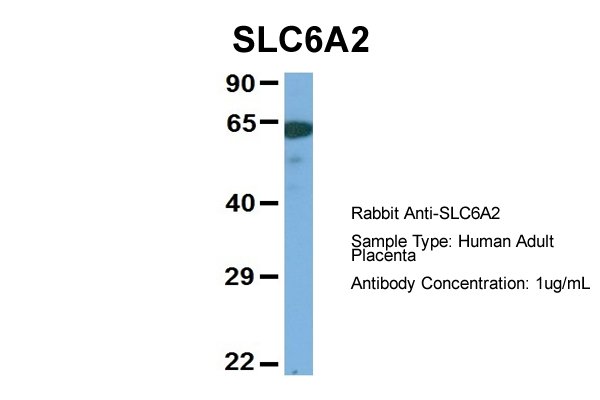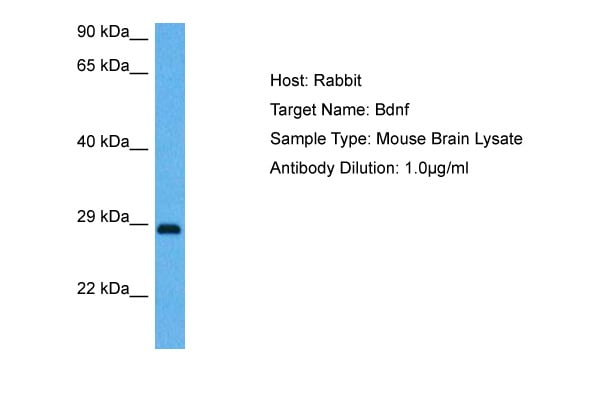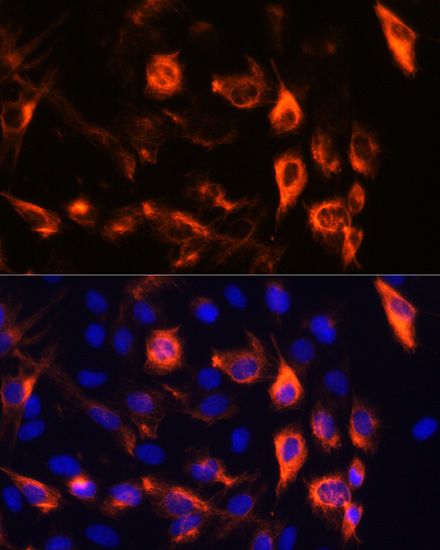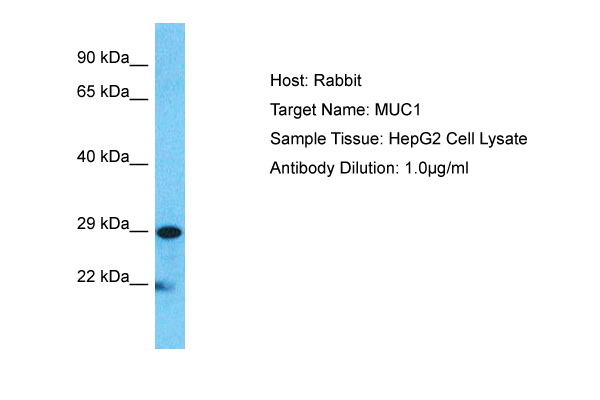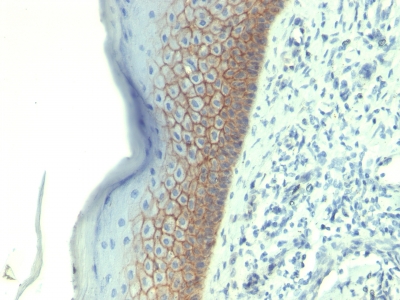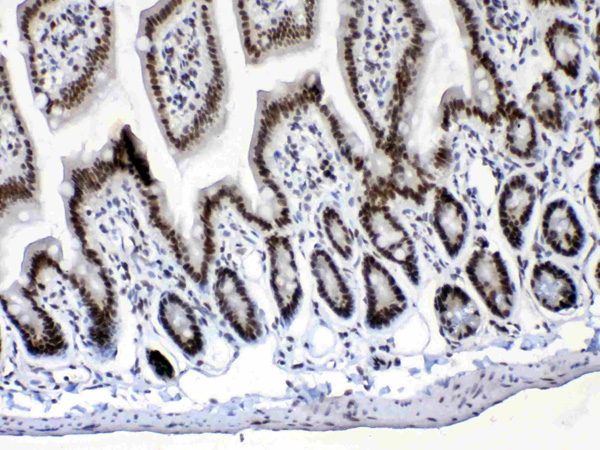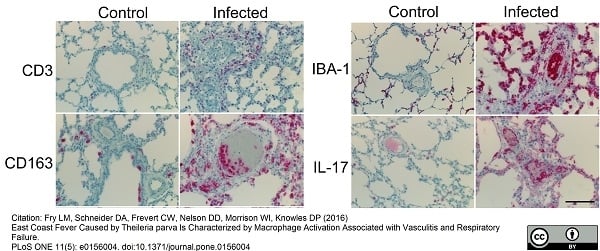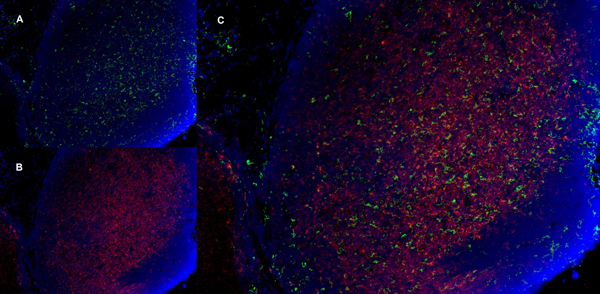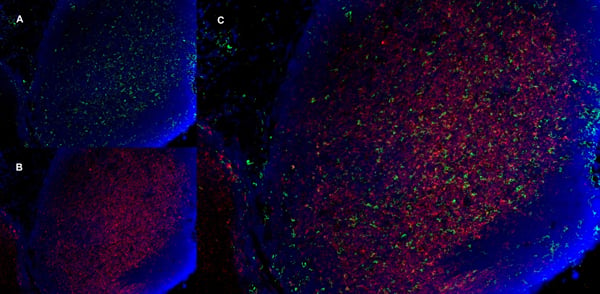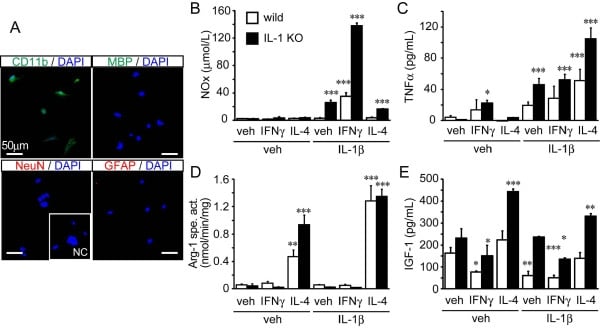Filters
Clonality
Type
Reactivity
Gene Name
Isotype
Host
Application
Clone
36 results for " Cell Type Marker" - showing 1-36
immunoglobulin heavy constant gamma 2 (G2m marker) (IGHG2), ELISA Kit (Cat# AAA22763)
Full Name
Human immunoglobulin heavy constant gamma 2 (G2m marker) (IGHG2) ELISA Kit
Reactivity
Human
Pricing
14-3-3 protein sigma, ELISA Kit (Cat# AAA17647)
Full Name
Human 14-3-3 protein sigma ELISA Kit
Gene Names
SFN; YWHAS
Reactivity
Human
Pricing
CD248 molecule, endosialin, ELISA Kit (Cat# AAA18107)
Full Name
Human Endosialin, CD248 ELISA Kit
Gene Names
CD248; TEM1; CD164L1
Reactivity
Human
Pricing
Cyfra21-1, Antibody (Cat# AAA17944)
Full Name
Cyfra21-1 (CK19) Antibody
Applications
IHC
Purity
>90% pure (SDS-PAGE).
Protein A chromatography.
Protein A chromatography.
Pricing
Antigen KI-67 (Ki-67), ELISA Kit (Cat# AAA27344)
Full Name
Mouse Antigen KI-67 (Ki-67) ELISA Kit
Gene Names
MKI67; KIA; MIB-; MIB-1; PPP1R105
Reactivity
Mouse
Pricing
ACTB, Polyclonal Antibody (Cat# AAA23467)
Full Name
ACTB Antibody - middle region
Gene Names
ACTB; BRWS1; PS1TP5BP1
Reactivity
Cow, Goat, Horse, Human, Mouse, Pig, Rat, Sheep, Zebrafish
Applications
IHC, WB
Purity
Affinity Purified
Pricing
SLC6A2, Polyclonal Antibody (Cat# AAA23496)
Full Name
SLC6A2 antibody - middle region
Gene Names
SLC6A2; NET; NAT1; NET1; SLC6A5
Reactivity
Cow, Dog, Guinea Pig, Horse, Human, Mouse, Rabbit, Rat
Applications
WB
Purity
Affinity Purified
Pricing
GFAP, Monoclonal Antibody (Cat# AAA28378)
Full Name
GFAP Rabbit mAb
Reactivity
Human, Mouse, Rat
Applications
WB, IHC, IF
Purity
Affinity purification
Pricing
BDNF, Polyclonal Antibody (Cat# AAA23497)
Full Name
BDNF antibody - middle region
Gene Names
BDNF; ANON2; BULN2
Reactivity
Tested Species Reactivity: Human, Mouse, Monkey
Predicted Species Reactivity: Human, Mouse, Rat, Dog, Horse, Pig, Rabbit
Predicted Species Reactivity: Human, Mouse, Rat, Dog, Horse, Pig, Rabbit
Applications
IHC, WB
Purity
Affinity Purified
Pricing
KRT8, Polyclonal Antibody (Cat# AAA23499)
Full Name
KRT8 antibody - middle region
Gene Names
KRT8; K8; KO; CK8; CK-8; CYK8; K2C8; CARD2
Reactivity
Cow, Dog, Guinea Pig, Horse, Human, Mouse, Pig, Rabbit, Rat
Applications
WB, IHC
Purity
Affinity Purified
Pricing
Ki67, Polyclonal Antibody (Cat# AAA28343)
Full Name
Ki67 Rabbit pAb
Gene Names
MKI67; KIA
Reactivity
Human, Mouse, Rat
Applications
WB, IHC, IF
Purity
Affinity purification
Pricing
KRT8, Polyclonal Antibody (Cat# AAA23498)
Full Name
KRT8 Antibody
Gene Names
KRT8; K8; KO; CK8; CK-8; CYK8; K2C8; CARD2
Reactivity
Cow, Dog, Guinea Pig, Horse, Human, Mouse, Rat, Yeast
Applications
WB, IHC
Purity
Affinity Purified
Pricing
Cytokeratin 7, Monoclonal Antibody (Cat# AAA23922)
Full Name
Cytokeratin 7 (Glandular and Transitional Epithelial Marker)
Gene Names
KRT7; K7; CK7; SCL; K2C7
Reactivity
Human
Applications
WB, IHC
Purity
Purified Ab with BSA and Azide at 200ug/ml OR Purified Ab WITHOUT BSA and Azide at 1.0mg/ml
Pricing
MMP1, Polyclonal Antibody (Cat# AAA23500)
Full Name
MMP1 antibody - N-terminal region
Gene Names
MMP1; CLG; CLGN
Reactivity
Horse, Human
Applications
IHC, WB
Purity
Protein A purified
Pricing
ErbB2/HER2, Monoclonal Recombinant Antibody (Cat# AAA14881)
Full Name
Recombinant anti- human ErbB2/HER2 Antibody (Trastuzumab)
Gene Names
ERBB2; NEU; NGL; HER2; TKR1; CD340; HER-2; MLN 19; HER-2/neu
Reactivity
Human
Applications
FC/FACS
Purity
>98.0% as determined by SEC-HPLC & SDS-PAGE.
Pricing
MSH2, Monoclonal Antibody (Cat# AAA23925)
Full Name
MSH2 (DNA Mismatch Repair Marker)
Gene Names
MSH2; FCC1; COCA1; HNPCC; LCFS2; hMSH2; HNPCC1
Reactivity
Human
Applications
FC, WB, IHC
Purity
Purified
Pricing
Vimentin, Monoclonal Antibody (Cat# AAA28380)
Full Name
[KO Validated] Vimentin Rabbit mAb
Reactivity
Human, Mouse, Rat
Applications
WB, IHC, IF, IP
Purity
Affinity purification
Pricing
Vimentin, Antibody (Cat# AAA23937)
Full Name
Vimentin (Mesenchymal Cell Marker)
Reactivity
Human
Applications
WB, IHC
Purity
Purified Ab with BSA and Azide at 200ug/ml OR Purified Ab WITHOUT BSA and Azide at 1.0mg/ml
Pricing
MUC1, Polyclonal Antibody (Cat# AAA23492)
Full Name
MUC1 antibody - C-terminal region
Gene Names
MUC1; EMA; MCD; PEM; PUM; KL-6; MAM6; MCKD; PEMT; CD227; H23AG; MCKD1; MUC-1; ADMCKD; ADMCKD1; CA 15-3; MUC-1/X; MUC1/ZD; MUC-1/SEC
Reactivity
Cow, Dog, Guinea Pig, Horse, Human, Mouse, Rabbit, Rat, Pig
Applications
IHC, WB
Purity
Affinity Purified
Pricing
S100A4/Metastasin/Calvasculin, Antibody (Cat# AAA23934)
Full Name
S100A4/Metastasin/Calvasculin (Marker of Tumor Metastasis)
Gene Names
S100A4; 42A; 18A2; CAPL; FSP1; MTS1; P9KA; PEL98
Reactivity
Human, Mouse
Applications
FC/FACS, WB, IF, IHC
Purity
Purified Ab with BSA and Azide at 200ug/ml OR Purified Ab WITHOUT BSA and Azide at 1.0mg/ml
Pricing
E-Cadherin/CD324, Monoclonal Antibody (Cat# AAA23896)
Full Name
E-Cadherin/CD324 (Intercellular Junction Marker)
Gene Names
CDH1; UVO; CDHE; ECAD; LCAM; Arc-1; BCDS1; CD324
Reactivity
Human.
Does not react with Mouse and Rat. Others not known.
Does not react with Mouse and Rat. Others not known.
Applications
FC/FACS, IF, WB, IHC
Pricing
CD20/MS4A1, Monoclonal Antibody (Cat# AAA23946)
Full Name
CD20/MS4A1 (B-Cell Marker)
Gene Names
MS4A1; B1; S7; Bp35; CD20; CVID5; MS4A2; LEU-16
Reactivity
Human
Applications
FC/FACS, IF, WB, IHC
Purity
Purified Ab with BSA and Azide at 200ug/ml OR Purified Ab WITHOUT BSA and Azide at 1.0mg/ml
Pricing
TACSTD2/TROP2, Monoclonal Antibody (Cat# AAA23900)
Full Name
TACSTD2/TROP2 (Epithelial Marker)
Gene Names
TACSTD2; EGP1; GP50; M1S1; EGP-1; TROP2; GA7331; GA733-1
Reactivity
Human. Others not known.
Applications
IHC
Pricing
Musashi 1/Msi1, Polyclonal Antibody (Cat# AAA19172)
Full Name
Anti-Musashi 1/Msi1 Picoband Antibody
Reactivity
Human, Mouse, Rat
No cross reactivity with other proteins
No cross reactivity with other proteins
Applications
IHC, WB
Purity
Immunogen affinity purified
Pricing
Cytokeratin 15, Monoclonal Antibody (Cat# AAA23924)
Full Name
Cytokeratin 15 (Esophageal Squamous Cell Carcinoma Marker)
Gene Names
KRT15; K15; CK15; K1CO
Reactivity
Human
Applications
IF, WB, IHC
Purity
Purified Ab with BSA and Azide at 200ug/ml OR Purified Ab WITHOUT BSA and Azide at 1.0mg/ml
Pricing
Cytokeratin 15, Monoclonal Antibody (Cat# AAA23923)
Full Name
Cytokeratin 15 (Esophageal Squamous Cell Carcinoma Marker)
Gene Names
KRT15; K15; CK15; K1CO
Reactivity
Human
Applications
FC/FACS, IF, WB, IHC
Purity
Purified Ab with BSA and Azide at 200ug/ml OR Purified Ab WITHOUT BSA and Azide at 1.0mg/ml
Pricing
CD163, Monoclonal Antibody (Cat# AAA12256)
Full Name
Mouse Anti Human CD163: RPE
Gene Names
CD163; M130; MM130; SCARI1
Reactivity
Human
Applications
FC/FACS
Pricing
CD335, Monoclonal Antibody (Cat# AAA12253)
Full Name
MOUSE ANTI PIG CD335
Reactivity
Pig
Applications
FC, IF
Pricing
CD11b, Monoclonal Antibody (Cat# AAA12184)
Full Name
RAT ANTI MOUSE CD11b
Gene Names
Itgam; CR3; CR3A; MAC1; Cd11b; Ly-40; Mac-1; Mac-1a; CD11b/CD18; F730045J24Rik
Applications
FC/FACS, IF, IP
Pricing
CD11b, Monoclonal Antibody (Cat# AAA12185)
Full Name
RAT ANTI MOUSE CD11b
Gene Names
Itgam; CR3; CR3A; MAC1; Cd11b; Ly-40; Mac-1; Mac-1a; CD11b/CD18; F730045J24Rik
Applications
FC/FACS, IF, IP
Pricing
CD11b, Monoclonal Antibody (Cat# AAA12181)
Full Name
RAT ANTI MOUSE CD11b
Gene Names
Itgam; CR3; CR3A; MAC1; Cd11b; Ly-40; Mac-1; Mac-1a; CD11b/CD18; F730045J24Rik
Reactivity
Human
Applications
FC/FACS, IF, IP
Pricing
CD11b, Monoclonal Antibody (Cat# AAA12231)
Full Name
RAT ANTI MOUSE CD11b:Low Endotoxin
Gene Names
Itgam; CR3; CR3A; MAC1; Cd11b; Ly-40; Mac-1; Mac-1a; CD11b/CD18; F730045J24Rik
Applications
FC/FACS, FN, IF, IP
Pricing
CD11b, Monoclonal Antibody (Cat# AAA12186)
Full Name
RAT ANTI MOUSE CD11b:RPE
Gene Names
Itgam; CR3; CR3A; MAC1; Cd11b; Ly-40; Mac-1; Mac-1a; CD11b/CD18; F730045J24Rik
Applications
FC/FACS
Pricing
CD11b, Monoclonal Antibody (Cat# AAA12183)
Full Name
RAT ANTI MOUSE CD11b:FITC
Gene Names
Itgam; CR3; CR3A; MAC1; Cd11b; Ly-40; Mac-1; Mac-1a; CD11b/CD18; F730045J24Rik
Applications
FC/FACS
Pricing
CD11b, Monoclonal Antibody (Cat# AAA12182)
Full Name
RAT ANTI MOUSE CD11b:FITC
Gene Names
Itgam; CR3; CR3A; MAC1; Cd11b; Ly-40; Mac-1; Mac-1a; CD11b/CD18; F730045J24Rik
Applications
FC/FACS
Pricing
CD163, Monoclonal Antibody (Cat# AAA12100)
Full Name
MOUSE ANTI HUMAN CD163
Gene Names
CD163; M130; MM130
Applications
EIA, FC/FACS, IF, IY, WB
Pricing















